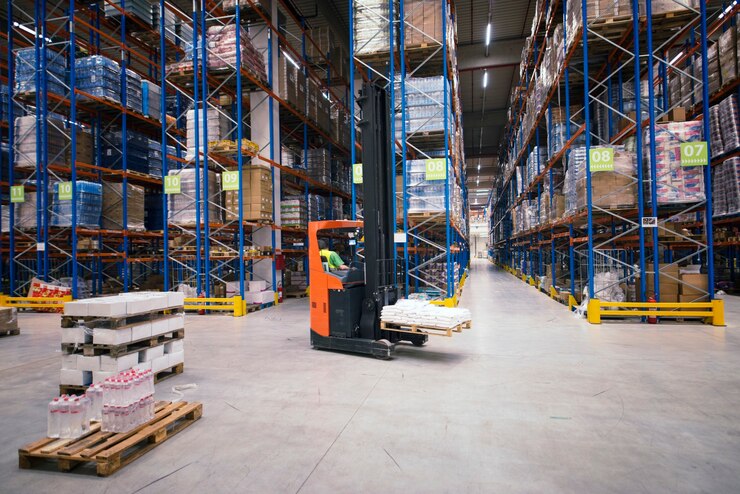
As industries evolve and demands for efficient storage solutions increase, the robustness of racks and shelves becomes paramount. Modern storage systems are now designed to enhance the strength and durability of these essential components, ensuring they can withstand heavier loads, resist environmental factors, and offer longer service lives. This article explores the advancements in storage system technology that contribute to making racks and shelves more robust.
1. Advanced Materials and Construction Techniques
a. High-Strength Materials
New storage systems utilize advanced materials such as high-strength steel alloys, reinforced aluminum, and composite materials. These materials provide superior load-bearing capabilities and resistance to wear and tear. High-strength steel, for example, can support heavier weights without bending or buckling, making it ideal for industrial applications where robustness is critical.
b. Precision Engineering
Modern engineering techniques, including computer-aided design (CAD) and finite element analysis (FEA), allow for the precise design and optimization of racks and shelves. These technologies ensure that every component is engineered to maximize strength and durability while minimizing material use and weight.
2. Innovative Design Features
a. Reinforced Structures
New storage systems often feature reinforced designs, such as cross-bracing and gussets, which enhance the structural integrity of racks and shelves. These reinforcements distribute loads more evenly and provide additional support at critical stress points.
b. Modular Design
Modular storage systems offer flexibility and scalability, allowing for easy reconfiguration and expansion. These systems are designed with robust interlocking components that provide stability and strength. The ability to customize configurations ensures that the storage system can be optimized for specific loads and uses, further enhancing robustness.
3. Advanced Manufacturing Processes
a. Robotic Welding and Assembly
Robotic welding and assembly techniques ensure consistent and high-quality joints, which are crucial for the structural integrity of racks and shelves. Robots can perform precise welds and assemble components with minimal variation, resulting in stronger and more reliable products.
b. Powder Coating and Finishing
Advanced finishing techniques, such as powder coating, provide a durable and protective layer on racks and shelves. This coating is resistant to scratches, corrosion, and other environmental factors, extending the lifespan of the storage systems. Powder coating also enhances the aesthetic appeal of the storage units, making them suitable for a variety of settings.
4. Enhanced Load-Bearing Capacity
a. Dynamic Load Distribution
New storage systems are designed to distribute loads dynamically, reducing stress on individual components. This feature is particularly important in mobile and automated storage systems, where the load distribution changes as items are moved.
b. Increased Weight Limits
With the use of high-strength materials and reinforced designs, modern racks and shelves can support significantly higher weight limits than their predecessors. This increased load-bearing capacity allows businesses to store more goods in the same amount of space, improving overall efficiency and productivity.
5. Smart Storage Solutions
a. Integrated Sensors
Smart storage systems incorporate sensors that monitor load weights, shelf integrity, and environmental conditions in real-time. These sensors can detect potential issues, such as overloading or structural weakness, before they become critical problems. This proactive monitoring ensures that racks and shelves remain robust and safe.
b. Automated Adjustments
Some advanced storage systems can make automatic adjustments based on sensor data. For instance, adjustable shelves can reposition themselves to evenly distribute weight and prevent overloading. Automated systems can also alert maintenance teams when repairs or reinforcements are needed, ensuring continuous robustness.
6. Sustainable Practices
a. Eco-Friendly Materials
The use of sustainable materials, such as recycled steel and eco-friendly coatings, not only benefits the environment but also contributes to the robustness of storage systems. These materials are often treated to enhance their strength and durability, making them suitable for long-term use.
b. Energy-Efficient Manufacturing
Modern manufacturing processes are increasingly focused on energy efficiency. Techniques such as cold forming and high-efficiency welding reduce the energy required to produce robust storage components, lowering costs and environmental impact while maintaining high quality.
Conclusion
The advancements in new storage systems have significantly enhanced the used robustness of racks and shelves. Through the use of high-strength materials, innovative design features, advanced manufacturing processes, and smart technologies, these systems offer superior load-bearing capabilities, increased durability, and greater overall reliability. As industries continue to demand more efficient and robust storage solutions, these technological innovations will play a crucial role in meeting those needs and ensuring the longevity and safety of storage infrastructures.
The rack occasion discount is one ofe the best companies specialized in the selling the last inovative used racks and shelves in France with the best prices.
